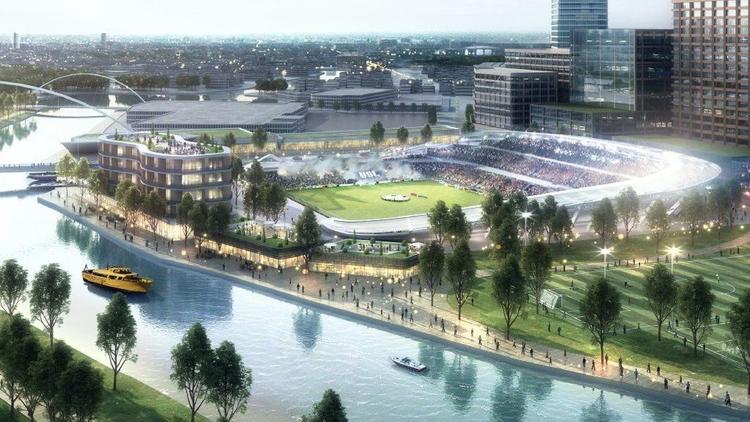The announcement that Chicago Cubs Chairman Tom Ricketts had purchased a majority share of a proposed USL team was more than just a routine ownership sale: It potentially marks a shift in the relationship between USL and MLS.
The relationship, for the most part, has been fairly clear: USL serves as a developmental league on the player side and a pathway for owners who seek a future MLS membership. Two of the three finalists in the next round of MLS expansion currently excel at the USL level. MLS participation in USL helped raise that Division III circuit to Division II status.
A new Chicago soccer stadium grew out of a proposal to lure a second Amazon HQ to the Windy City, and the Chicago bid did indeed make the final 20, as the ecommerce giant is expected to reach a decision on a location by the end of the year. The 20,000-seat stadium was pitched as an amenity: a facility hosting sports, entertainment and more that could be used as well by Amazon.
Sports, entertainment and more pretty much sums up the Chicago Cubs business model these days. The Cubs are in the midst of a multiyear campaign to upgrade Wrigley Field from the world’s largest beer garden into the core of an entertainment district that combines the Friendly Confines with new restaurants, hotels, bars and entertainment spaces, like the outdoor plaza at Gallagher Way. (You can read more about the Wrigley Field makeover here.) Though Ricketts and developer Sterling Bay didn’t announce any specifics of the new Chicago soccer stadium, it’s not hard to conclude, given Ricketts’ background, that something similar to the Wrigley Field entertainment district isn’t in the works. (Here’s our coverage of the original announcement.)
Which is great news for Chicago soccer fans. And bad news for MLS and Chicago Fire fans.
Chicago is a problematic market for MLS. Chicago Fire ownership has had mixed success playing out of Toyota Park in suburban Bridgeview. (The suburban location is somewhat of a misnomer: Bridgeview is a first-tier suburb and the stadium is only 12 miles from downtown Chicago.) Last season saw an attendance boost, but that’s been wiped away so far in 2018, with the Fire now averaging 14,288 fans per match, some 18 percent below 2017’s average of 17,383. (Bad weather, we should note, has played a big part in the Chicago Fire numbers.) Bringing fans out to Toyota Park has always been a challenge for the Fire.
And, as we know in Chicago, location is everything. The new stadium is pitched as part of the larger 70-acre Lincoln Yards development from Sterling Bay, located between Lincoln Park and Bucktown. Sites like this, comprising a former steel plant and nearby industrial parcels, don’t pop up every day in a major market like Chicago. While the site has been pitched to Amazon, there’s no doubt a major development will take place there (indeed, we’re seeing the Amazon pitches recycled for other large employers), especially a development located in the midst of trendy Chitown neighborhoods like Lincoln Park and Bucktown. These are neighborhoods with the millennial-centered demographics that every pro-soccer team is chasing.
That’s a pretty prime market for USL to challenge MLS. Given the MLS business structure, a heavyweight like Ricketts, if interested in soccer, would have been expected to invest in an MLS team. In this case, Ricketts went with the low-overhead USL.
The Ricketts announcement doesn’t actually bind USL or Sterling Bay to anything. If the Amazon headquarters ends up elsewhere, Sterling Bay could say, hey, that 10 acres for the soccer stadium could be better used for other development. And given the relatively low cost of a USL franchise, Ricketts could sell it or write it off as a bad investment. For MLS, however, the worst-case scenario is for the development to proceed with a soccer stadium at its core and the Cubs’ entertainment expertise rubs off on the USL team, and it begins to outdraw the Fire. There’s also the potential loss of sponsorships.
In any case, the Ricketts announcement should be a wake-up call: USL is now capable of attracting big-buck investors who don’t seem to give a darn about MLS and realize a very well-run, low-overhead USL team can be very profitable.
Rendering courtesy Skidmore, Owings & Merrill.
This article first appeared in the weekly Soccer Stadium Digest newsletter. Are you a subscriber? Sign up here for your free subscription!

